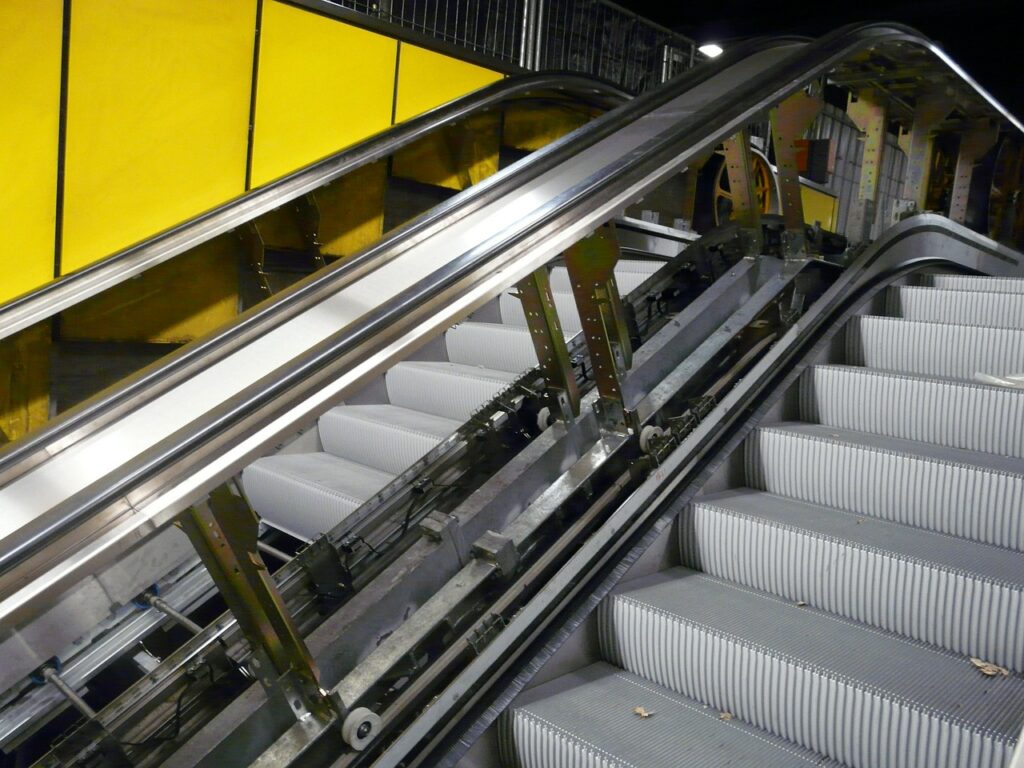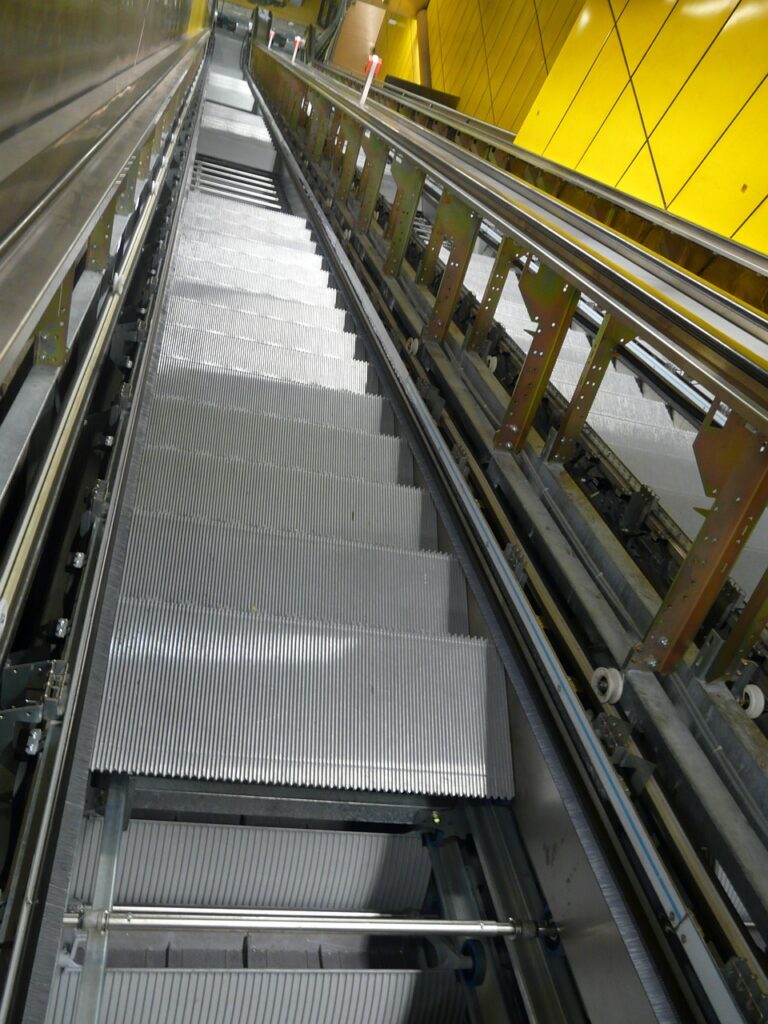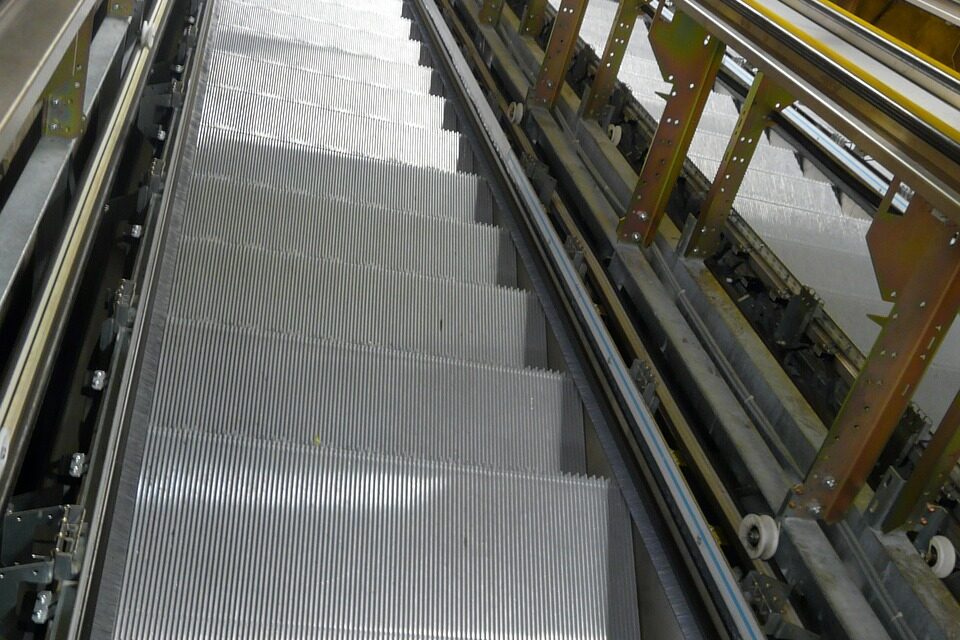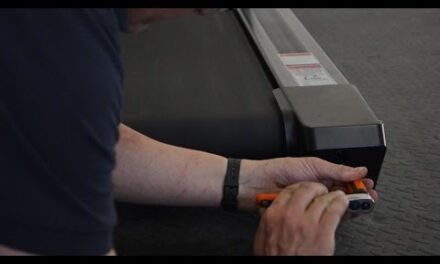Are you considering investing in a treadmill but curious about the upkeep it entails? Look no further! In this article, you’ll find all the information you need to know about the maintenance required for a treadmill. As fitness and gym equipment enthusiasts, we understand the importance of having accurate and reliable information before making a purchase. Whether you are based in the US or the UK, this article is tailored to provide you with insights on how to keep your treadmill in optimal condition. So, let’s dive right in and explore the world of treadmill maintenance together!

This image is property of pixabay.com.
Daily Maintenance
Cleaning the Belt and Deck
To ensure optimal performance and longevity of your treadmill, it is important to clean the belt and deck on a daily basis. Use a soft, dry cloth to wipe down the belt and remove any dust or debris that may have accumulated. This will help prevent any particles from getting trapped in the belt and causing friction or damage. Additionally, if you notice any sweat or liquid on the belt, be sure to wipe it off immediately to prevent corrosion or slipping.
Checking for Loose Parts
Before each use, take a quick moment to check for any loose parts on your treadmill. This includes screws, bolts, and nuts that may have come loose due to regular wear and tear. Use a screwdriver or wrench to tighten any loose parts that you find. This simple step can prevent accidents and ensure the stability and safety of your treadmill.
Inspecting the Power Cord
Another important daily maintenance task is to inspect the power cord of your treadmill. Check for any signs of fraying or damage to the cord. If you notice any issues, it is crucial to address them immediately to avoid electrical hazards and ensure safe and efficient operation of the treadmill. If you find any damage, contact a professional technician to repair or replace the power cord.
Monitoring the Treadmill’s Performance
Lastly, on a daily basis, make it a habit to monitor the performance of your treadmill. Pay attention to any unusual noises, vibrations, or changes in the functionality of the machine. If you notice any issues, it is important to address them promptly. Regularly monitoring the treadmill’s performance will allow you to catch any problems early on and prevent major repairs or accidents down the line.
Weekly Maintenance
Lubricating the Belt
Proper lubrication of the treadmill belt is essential for smooth and quiet operation. As part of your weekly maintenance routine, apply a silicone-based lubricant to the belt. This will reduce friction and prevent premature wear and tear. Be sure to follow the manufacturer’s instructions for the specific type and amount of lubricant to use. Regularly lubricating the belt will help prolong its lifespan and ensure a more enjoyable workout experience.
Cleaning the Console
The console of your treadmill is where you control and monitor your workouts. To keep it in top condition, it is important to clean it on a weekly basis. Use a soft, slightly damp cloth to wipe down the console and remove any dirt, sweat, or fingerprints. Avoid using harsh chemicals or abrasive materials that may damage the surface. Keeping the console clean will not only improve its appearance but also ensure accurate readings and proper functioning of the controls and display.
Checking the Safety Key
The safety key is a vital component of your treadmill that helps prevent accidents and injuries. As part of your weekly maintenance routine, check the safety key to ensure it is in good condition and securely attached to the console. Test its functionality by inserting the key into the designated slot and starting the treadmill. If the treadmill does not start or stops immediately when the key is removed, it is functioning correctly. If you encounter any issues, contact the manufacturer or a professional technician for assistance.
Inspecting the Motor
The motor is the powerhouse of your treadmill, and its proper functioning is crucial for a smooth and efficient workout. Once a week, inspect the motor for any signs of damage, such as frayed wires or excessive dust accumulation. Use a soft brush or vacuum cleaner to remove any dust or debris that may have collected around the motor. If you notice any issues or abnormalities, such as strange noises or overheating, it is recommended to consult a professional technician for further inspection and repair.
Monthly Maintenance
Cleaning the Motor Housing
The motor housing is the protective casing that surrounds the motor. To ensure optimal performance and longevity of the motor, it is important to clean the motor housing on a monthly basis. Use a soft cloth or brush to remove any dust, dirt, or debris that may have accumulated on the housing. This will help prevent overheating and damage to the motor. Avoid using water or liquid cleaners, as they can cause electrical hazards or damage the motor.
Tightening Bolts and Screws
Over time, the vibrations and movements of the treadmill can cause bolts and screws to come loose. As part of your monthly maintenance routine, inspect and tighten all the bolts and screws on your treadmill. This includes those on the frame, console, and other components. Use a screwdriver or wrench to ensure they are securely fastened. Tightening the bolts and screws regularly will help maintain the stability and safety of your treadmill.
Inspecting the Drive Belt
The drive belt is an essential component of your treadmill that connects the motor to the belt and allows for smooth movement. Once a month, inspect the drive belt for signs of wear and tear, such as fraying or cracking. If you notice any issues, such as excessive looseness or tightness, it is recommended to consult the manufacturer or a professional technician for further inspection and potential replacement of the drive belt.
Checking the Treadmill’s Alignment
Proper alignment of the treadmill is important for safe and effective workouts. Monthly, take a moment to check the alignment of the treadmill belt. It should be centered and running straight without any sideways movements or rubbing against the sides. If you notice any misalignment, consult the user manual or contact the manufacturer for instructions on how to adjust the alignment. Incorrect alignment can lead to uneven wear of the belt and potential damage to the treadmill.
Quarterly Maintenance
Inspecting the Power Switch
The power switch is responsible for turning the treadmill on and off. Quarterly, inspect the power switch for any signs of damage or malfunction. Test its functionality by turning the treadmill on and off and ensuring it operates smoothly. If you encounter any issues, such as difficulty in turning the treadmill on or off, it is recommended to consult a professional technician for inspection and repair of the power switch.
Replacing the Drive Belt
The drive belt is a component that may require replacement over time due to regular wear and tear. As part of your quarterly maintenance routine, inspect the drive belt for any signs of excessive wear, cracking, or stretching. If you notice any issues, it is recommended to contact the manufacturer or a professional technician for guidance on how to properly replace the drive belt. Regular replacement of the drive belt will ensure optimal performance and prevent any potential accidents or injuries.
Cleaning the Inside Components
Regular cleaning of the inside components of your treadmill is essential for its proper functioning and longevity. Every quarter, carefully remove the motor cover and using a soft brush or vacuum cleaner, clean any dust or debris that may have accumulated inside. Be cautious and avoid touching any electrical components. Cleaning the inside components will prevent potential issues caused by dirt or dust build-up and ensure optimal performance of the treadmill.
Checking the Treadmill’s Incline Functionality
If your treadmill has an incline feature, it is important to regularly check its functionality. Quarterly, test the incline functionality by adjusting the incline level and ensuring it operates smoothly without any jerking or sticking. If you encounter any issues, such as the incline not adjusting or excessive noise, consult the user manual or contact the manufacturer for guidance on how to troubleshoot and address the problem. Proper maintenance of the incline feature will ensure a varied and effective workout experience.

This image is property of pixabay.com.
Annual Maintenance
Inspecting and Cleaning the Fan
The fan in your treadmill helps keep you cool and comfortable during your workouts. Annually, inspect the fan for any signs of damage, such as broken blades or excessive noise. Use a soft cloth or brush to remove any dust or debris that may have accumulated on the fan. A clean and well-functioning fan will enhance your workout experience and prevent overheating of the motor and other components.
Replacing the Running Belt
The running belt is the surface on which you walk or run during your treadmill workouts. Over time, it may incur wear and tear that affects its performance and safety. Annually, inspect the running belt for any signs of fraying, excessive wear, or unevenness. If you notice any issues, it is recommended to contact the manufacturer or a professional technician for guidance on how to properly replace the running belt. Regular replacement of the running belt will ensure a smooth and comfortable workout experience.
Testing the Emergency Stop Button
The emergency stop button is a safety feature that allows you to immediately stop the treadmill in case of an emergency. Annually, test the functionality of the emergency stop button by pressing it during a workout and ensuring that the treadmill comes to an immediate stop. If the emergency stop button does not work as intended, it is recommended to contact a professional technician for inspection and repair. A properly functioning emergency stop button is crucial for your safety and the safety of others using the treadmill.
Checking the Treadmill’s Electronics
The electronics of your treadmill, including the display screen and buttons, play a crucial role in monitoring and controlling your workouts. Annually, inspect the electronics for any signs of damage, such as cracked screens or malfunctioning buttons. If you notice any issues, it is recommended to consult the user manual or contact the manufacturer for guidance on how to troubleshoot and address the problem. Regularly checking the electronics will ensure accurate readings and proper functionality of your treadmill.
Troubleshooting Common Issues
Treadmill not starting
If your treadmill fails to start, there may be several causes. First, ensure that the power cord is securely plugged into an active power outlet. Check the power switch and make sure it is turned on. If these basic steps do not resolve the issue, consult the user manual for troubleshooting guidelines. If the problem persists, it is recommended to contact a professional technician for further assistance.
Belt slipping
A slipping belt can make your workouts uncomfortable and unsafe. If you experience belt slipping, first check that the belt is properly tensioned. Consult the user manual for instructions on how to adjust the belt tension. If the belt tension is correct and the issue persists, inspect the drive belt for signs of wear or stretching. If necessary, contact the manufacturer or a professional technician for guidance on how to properly replace the drive belt.
Console not working
If the console of your treadmill is not working, there may be a variety of reasons. First, ensure that the treadmill is properly connected to a power source and turned on. Check the power cord and power switch for any signs of damage or malfunction. If these basic steps do not resolve the issue, consult the user manual for troubleshooting guidelines or contact the manufacturer for further assistance.
Loud or abnormal noises
If your treadmill is making loud or abnormal noises during operation, it may indicate underlying issues. First, check for any loose parts, such as screws or bolts, and tighten them if necessary. Inspect the motor and drive belt for any signs of damage or misalignment. If the noises persist, it is recommended to contact a professional technician for further inspection and repair.
Professional Maintenance
Scheduling Regular Servicing
While regular maintenance tasks can significantly prolong the lifespan of your treadmill, it is also important to schedule regular servicing by a professional technician. A professional can perform in-depth inspections, identify potential issues, and provide thorough maintenance and repair services. Scheduling regular servicing, typically once or twice a year, will ensure the optimal performance and safety of your treadmill.
Hiring a Professional Technician
If you encounter complex issues or are unsure about performing maintenance tasks yourself, it is recommended to hire a professional technician. A professional technician is trained to diagnose and repair various treadmill problems, ensuring that your treadmill operates at its best. They have the expertise and specialized tools to handle any maintenance or repair needs, giving you peace of mind and a hassle-free treadmill experience.
Proper Use and Care Tips
Using the Treadmill on a Level Surface
To ensure proper performance and prevent strain on the treadmill’s components, it is important to use the treadmill on a level surface. Uneven surfaces can lead to misalignment, excessive wear, and potential accidents. Before starting your workout, check that the surface is level and free from any obstacles that may interfere with the treadmill’s operation.
Wearing Appropriate Footwear
Using proper footwear while using a treadmill can enhance your comfort and safety. Wear athletic shoes with good cushioning and support to reduce impact on your joints and prevent slipping. Avoid using sandals, flip-flops, or barefoot, as they offer limited support and may increase the risk of injuries.
Avoiding Excessive Weight on the Treadmill
Most treadmills have weight limits specified by the manufacturer. Exceeding these weight limits can put excessive strain on the motor, frame, and other components, leading to premature wear and potential damage. Refer to the user manual or contact the manufacturer to determine the recommended weight limits for your specific treadmill model.
Keeping the Treadmill in a Dry Area
Moisture can cause damage to the electrical components of your treadmill. It is important to keep the treadmill in a dry area and away from water sources. If you sweat during your workouts, wipe down the treadmill immediately to prevent moisture from seeping into the components. Avoid spilling liquids or cleaning the treadmill with excessive water. In case of any liquid spills, consult the user manual or contact the manufacturer for guidance on how to properly clean and dry the affected areas.
Benefits of Regular Maintenance
Prolonged Lifespan of the Treadmill
Regular maintenance greatly contributes to the longevity of your treadmill. By performing the recommended maintenance tasks outlined in this article, you can prevent premature wear and tear, extend the lifespan of the treadmill, and enjoy years of smooth and reliable operation.
Improved Performance and Safety
Proper maintenance ensures that your treadmill operates at its best, providing you with a smooth and enjoyable workout experience. Regular inspections and cleaning help identify potential issues before they escalate, maintaining optimal performance and reducing the risk of accidents or malfunctions during your workouts.
Prevention of Major Repairs
Neglecting regular maintenance can lead to minor issues becoming major problems that require costly repairs. By following the maintenance guidelines provided, you can catch and resolve minor issues early on, preventing them from turning into more significant and expensive repairs down the line.
Cost Savings in the Long Run
Investing time and effort in regular maintenance can result in significant cost savings in the long run. By ensuring your treadmill is properly maintained, you can prevent the need for expensive repairs or premature replacement. Regular maintenance minimizes the risk of breakdowns and helps you get the most out of your treadmill investment.
Conclusion
Maintaining your treadmill should be a priority to ensure its longevity, optimal performance, and your safety. Daily, weekly, monthly, quarterly, and annual maintenance tasks, such as cleaning, inspections, and adjustments, are essential for maintaining a smoothly functioning treadmill. Taking proper care of your treadmill through regular maintenance not only prolongs its lifespan but also enhances performance, prevents major repairs, and ultimately saves you money. So, follow the guidelines provided in this article and enjoy the benefits of a well-maintained treadmill for years to come.





